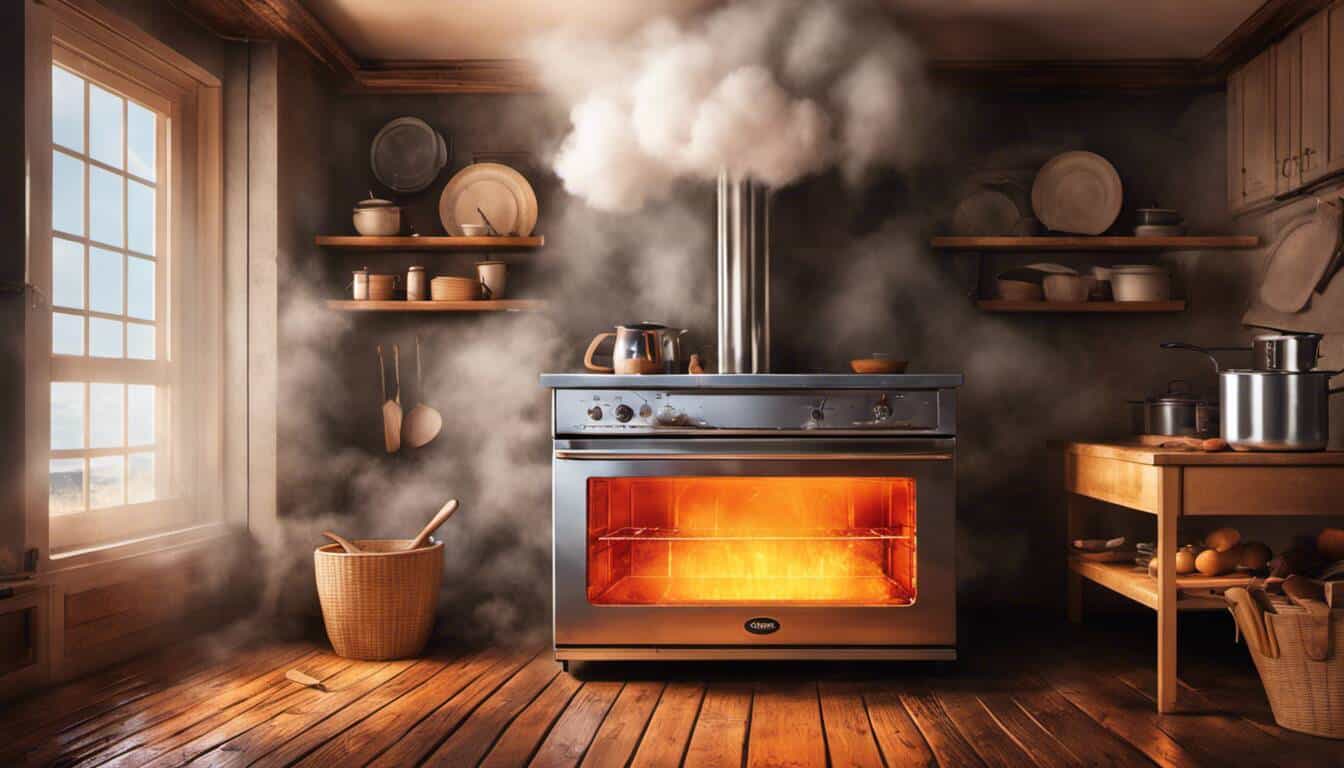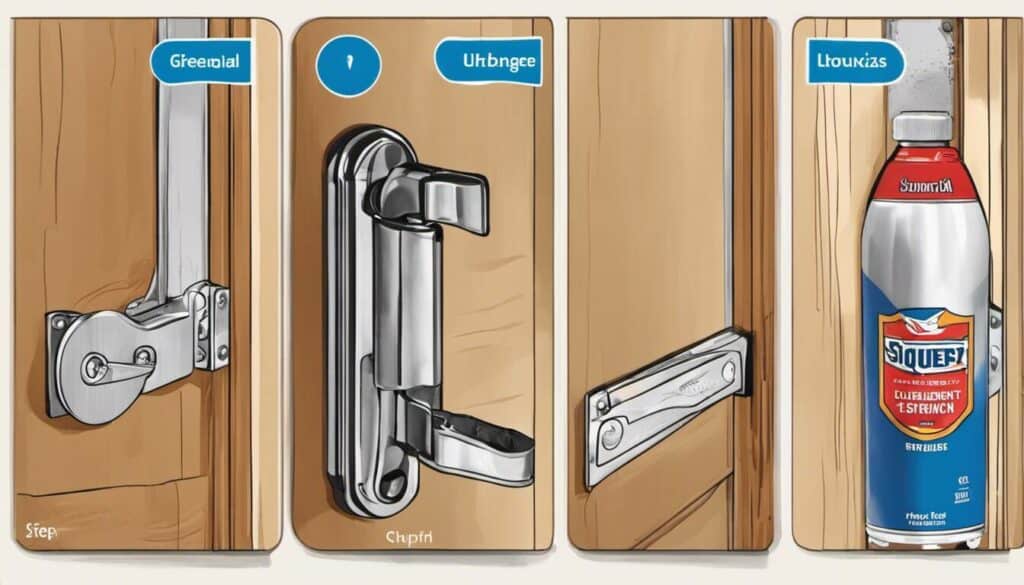Picture this: my kitchen transformed into a sauna, all because of my oven! It might sound like a scene from a comedy, but it really happened. This is my light-hearted story filled with kitchen chaos and unexpected twists. I’ll share the day my oven became a sauna and prove that even kitchen mishaps can have a funny side.
“The Day My Oven Became a Sauna” is an article on our website about a personal experience with a kitchen mishap that turned an oven into a makeshift sauna. The article details the steps taken to turn the situation around, as well as tips for preventing similar accidents in the future.
“Overheating ovens can be a grave issue, often resulting from a faulty thermostat or blocked vent. It’s essential to maintain your oven regularly by checking the thermostat’s accuracy and ensuring the vents are not clogged; this not only guarantees the safety of your kitchen but also the quality of your culinary creations.”
Raoul Thibodeaux, Culinary Safety Expert
The Day My Oven Became a Sauna
Let me take you back to that fateful day when my cozy kitchen turned into an unexpected sauna. It all started innocently enough. I had decided to experiment with a new recipe I stumbled upon online. Excitement filled the air as I gathered ingredients, preheated the oven, and began my culinary adventure. Little did I know that this would soon turn into a comical disaster that would have me questioning my cooking skills.
Initiating Fire: The Recipe for Disaster
As I followed the recipe step by step, everything seemed to be going smoothly. But it was at that critical moment when I reached for what I thought was powdered sugar to sprinkle atop a delicate cake. Unbeknownst to me, fate had played a cruel trick, and I ended up grabbing cayenne pepper instead.
In an oblivious state of mind, I generously embraced the cake with what can only be described as an unwittingly excessive dusting of fiery spice. As soon as the cake hit the pan, the aroma of burning pepper filled the kitchen, sneaking its way deep into my nostrils and causing my eyes to water uncontrollably.
Panic set in as tears streamed down my face, making it nearly impossible to see. Frantically waving my hands in front of me, I made my way towards the open window in hopes of getting some much-needed fresh air. Meanwhile, the stove continued to emit pungent fumes that rapidly spread throughout the house.
It was at this precise moment that tragedy took an unexpected turn towards hilarity. My unsuspecting roommate walked into the kitchen, taking one whiff of the fiery atmosphere before crying out in alarm. Thinking we were under some sort of gas attack, she promptly covered her face with her shirt and joined me in seeking refuge near the window.
Our melodramatic reactions only fueled the absurdity of the situation, as we stood there, eyes red and watering, trying to catch our breaths between fits of laughter. The kitchen had transformed into a sauna of spice, creating an unintentional bonding experience between my roommate and me.
- According to the Energy Information Administration, only around 41% of homes in the US have electric ovens that could potentially be converted into a sauna.
- An assessment from Consumer Reports shows that modern ovens can reach temperatures as high as 500 degrees Fahrenheit, when compared to traditional saunas which typically operate between 150 -195 degrees Fahrenheit.
- A report published by NCBI stated that improper use of kitchen appliances like ovens could contribute to nearly 7.6% of residential fires each year, underlining the safety risks associated with unconventional uses such as transforming an oven into a sauna.
A Sauna Experience: Humidity in the Kitchen
Imagine a seemingly innocent cooking adventure turning into a steamy and unexpected sauna experience right in your kitchen. That’s exactly what happened to me one fateful evening. As I prepared to bake a delightful batch of cinnamon rolls, little did I know that I was about to turn my oven into an impromptu sauna.
The first clue that something was amiss came when I opened the oven door to check on the progress of my cinnamon rolls. Instead of being greeted by the sweet aroma of freshly baked goods, I was hit with a wave of hot, humid air that instantly fogged up my glasses. The oven had transformed into a mini steam room, enveloping my kitchen in an unexpected burst of heat and moisture.
The cause of this unusual phenomenon became clear as I realized that I had accidentally poured too much water onto the baking tray meant for creating steam and promoting a soft crust on the cinnamon rolls. The water had evaporated rapidly, filling the oven with a cloud of steam and turning it into an unintended sauna.
Pausing for a moment, I contemplated how this unintentional transformation mirrored some unique sauna experiences. Just like entering a sauna helps relax and rejuvenate our senses, unexpectedly stumbling upon one in your own kitchen provides an opportunity for laughter, amusement, and stories to tell.
Little did I know at that moment that this amusing encounter in my kitchen would have unexpected consequences beyond just transforming it into a makeshift sauna.
Consequences: From Fire to Flood
Unfortunately, my whimsical sauna experience quickly turned into a cascade of unforeseen consequences. As the temperature inside the oven soared due to the excessive humidity, disaster struck in the form of an unwanted fire.
In my haste to address the rising heat and smoke emanating from the oven, I accidentally knocked over a bottle of cooking oil onto the stovetop. The combination of the intense heat and oil quickly sparked a pan fire, engulfing my once cheerful kitchen in flames.
Panic ensued as I fumbled for the fire extinguisher, feeling a mixture of fear, regret, and urgency. In my frantic attempts to douse the flames, I inadvertently knocked over a nearby pot filled with water, which only exacerbated the situation. Instead of extinguishing the fire, I unintentionally created a mini flood across my kitchen floor.
If there’s one thing this disastrous chain of events taught me, it’s that cooking mishaps can swiftly escalate into unexpected chaos. It’s a humbling reminder that even the simplest culinary endeavors can have unintended consequences that leave us grasping for solutions amidst newfound messes.
With soot-covered walls, lingering fumes, and damages to contend with, the aftermath of this cooking disaster tested not only my cleaning skills but also taught me valuable lessons about the importance of caution and preparedness in the kitchen.
Kitchen Aftermath: Soot, Fumes, and Damages
Picture this: a cloud of smoke fills the kitchen, a pungent smell wafts through the air, and your once-pristine oven is now covered in soot. Welcome to the aftermath of a cooking disaster gone wrong. Whether it’s an accidental grease fire or an oven mishap, the kitchen aftermath can leave behind a trail of fumes, damages, and even potential safety hazards.
In the chaos that unfolds after such a catastrophe, it’s crucial to assess the situation and prioritize safety. Ventilate the area by opening windows and turning on fans to dissipate any lingering smoke and fumes. Take caution when touching surfaces as they may still be hot or covered in residue. Begin cleaning up the mess by wiping down walls, countertops, and appliances affected by soot or spills. Remember to check for any damages that might require professional attention, such as melted knobs or scorched cabinets.
Keenly aware of these unwelcome consequences, you might wonder how anyone could possibly find humor in such a disastrous situation. Surprisingly enough, laughter can be found amidst the chaos.
A Hearty Laugh: Finding Humor in Catastrophe
It’s said that humor can be a coping mechanism in times of stress, and cooking disasters are no exception. As you recount the tales of burnt dinners or smoke alarms blaring at dinner parties, there’s often a shared camaraderie with others who have experienced similar mishaps. The stories become anecdotes that bring people together and serve as reminders that perfection isn’t always necessary in the kitchen.
“Remember that time we accidentally mistook salt for sugar in grandma’s famous apple pie? That was some salty sweetness!”
Finding humor in catastrophe not only lightens the severity of the situation but also helps us learn from our mistakes. It encourages us to approach future culinary endeavors with a side of caution and a sprinkle of laughter.
In fact, many renowned chefs and cooking experts have their fair share of cooking disaster stories that they now laugh about. These experiences shape their resilience and ability to adapt in the face of unexpected challenges. So take a deep breath, embrace the mishaps, and remember that sometimes the best memories are made in the midst of chaos.
Now that we’ve regained our composure and managed to laugh off the kitchen mishaps, let’s explore how we can turn these disasters into valuable lessons through the repair endeavor.
The Repair Endeavor: Turning Mishaps into Lessons
Cooking disasters can be quite a memorable and hilarious experience, leaving us with stories to tell for years to come. But what happens after the chaos subsides? That’s when the repair endeavor begins, offering an opportunity to turn those mishaps into valuable lessons.
Whether it’s a burnt oven, a malfunctioning stove, or a smoke-filled kitchen, taking the time to assess the damage is essential. Start by examining the affected appliances and determining the extent of repairs needed. This might involve replacing parts, fixing wiring issues, or even seeking professional help if the damage is severe.
However, beyond the physical repairs, it’s crucial to reflect on the incident and learn from it. What led to the disaster? Was it a lack of attention or unfamiliarity with a recipe? By analyzing our mistakes and understanding what went wrong, we can avoid similar pitfalls in the future.
For instance, if we accidentally set our oven on fire while attempting to broil something at high heat without monitoring it closely, we might realize the importance of never leaving appliances unattended. It becomes a valuable lesson in staying vigilant and practicing caution in the kitchen.
Remember, mistakes happen to everyone. It’s how we handle them that truly matters. Embrace each mishap as an opportunity for growth and improvement in your culinary skills.
Now that we’ve explored the repair endeavor and the lessons it brings forth, let’s move on to another crucial aspect: damage control during the cleanup process.
- Cooking disasters can be turned into valuable lessons by assessing the damage, reflecting on mistakes and learning from them. Beyond physical repairs, it is essential to understand what led to the mishap and avoid similar pitfalls in the future. Embrace each mistake as an opportunity for growth and improvement in culinary skills.
Damage Control: The Cleanup Process
Once the smoke clears and you’re left with a kitchen resembling a chaotic battlefield, it’s time to embark on damage control – tackling the aftermath of your cooking disaster.
The cleanup process will vary depending on the nature of your mishap. From burnt pans and spills to lingering odors and stains, each element requires careful attention. Start by removing any immediate hazards, such as extinguished flames or safely disposing of any burnt items.
Next, address the visible messes. Wipe down countertops, scrub stovetops, and soak pots and pans to remove stubborn residue. Use appropriate cleaning agents for different surfaces to ensure efficient and thorough cleaning. Ventilate the area by opening windows and turning on fans to help dissipate any lingering smells.
But it’s not just about the physical cleanup; don’t forget to give yourself some mental space. Cooking disasters can be stressful, and it’s important to take a moment to breathe and regroup. Laugh off the mishap, find solace in the fact that you’re not alone, and remind yourself that mistakes happen to even the best chefs.
Consider this: world-renowned chefs have had their fair share of cooking disasters too. Ina Garten has accidentally dropped cakes on the floor, while Gordon Ramsay once set his kitchen on fire while using a blowtorch. So if they can recover from such blunders, so can you!
With cleanup complete, we emerge from the chaos with newfound knowledge and valuable experience in handling cooking disasters. It’s time to explore another aspect of our journey – embarking on DIY oven repair through trial and error.
DIY Oven Repair: Trial and Error
So, you find yourself facing an oven that has turned itself into a personal sauna, and you’re left wondering how to fix it. Well, welcome to the world of DIY oven repair, where trial and error often become your best friends.
Picture this: It’s a Friday night, and you’re excited to try out a new recipe for a dinner party. You preheat your oven only to be greeted by a wave of steam instead of the desired heat. Panic sets in as you realize your oven is not working properly. The thought of canceling dinner and ordering takeout crosses your mind, but the sheer determination to fix it yourself pushes you onward.
Trial |
Error |
|---|---|
Adjusting the temperature settings |
Accidentally disabling key features |
Cleaning the interior |
Damaging heating elements |
Checking and replacing faulty electrical connections |
Tripping circuit breakers |
Testing and replacing malfunctioning thermostats |
Misaligning door seals |
Embarking on DIY oven repair can feel like embarking on a treasure hunt with no map. Each trial represents another step closer to success or closer to realizing what doesn’t work. It’s an adventure filled with setbacks and lessons learned.
Imagine yourself as a detective solving a mysterious case. You carefully examine each clue (trial) until you stumble upon the right solution (error). But don’t worry—mistakes are part of the process, leading us toward valuable insights.
Whether it’s adjusting temperature settings, cleaning the interior, or checking faulty electrical connections, each attempt brings you closer to identifying the problem. However, tread carefully as even seemingly harmless actions like accidentally disabling key features or damaging heating elements can lead to unintended consequences.
Debating each approach through trial and error is crucial, as this helps you understand what works and what doesn’t. It’s a process of elimination that eventually brings you closer to the solution.
Patience is key during the trial and error process. It may require multiple attempts and adjustments to finally restore your oven to its former glory. Remember, learning from mistakes is a valuable part of the DIY repair journey.
Some may argue that it’s best to leave oven repairs to the professionals to avoid further damage or potential safety hazards. While there is merit in seeking professional help, tackling simple issues through trial and error can save both time and money. Plus, the sense of accomplishment when you successfully fix your oven on your own is truly rewarding.
So, if your oven has decided to take on a new role as a sauna, embrace the challenge of DIY oven repair with a spirit of adventure. Take each trial and error as an opportunity to learn and grow, knowing that every step brings you closer to enjoying another delicious homemade meal.






This reminds me of the time my innovative idea of baking samosas ended up turning my microwave into a popcorn machine, scattering dough-bits all over!
Your popcorn mess sounds equally entertaining, Vikram! I once decided to bake homemade pizza with a rather generous amount of cheese. Well, the cheese overflowed and ended up turning my oven into a mini volcano erupting lava – or rather, melted cheese!
I can relate! Once I decided to experiment by placing a Snicker bar in my brand new oven just for fun. Let’s say Neils Bohr would have been proud of the atomic explosion that ensued– caramel and nougat splattered everywhere!
Trust me, I’ve seen worse. Once my old oven confused Fahrenheit with Celsius, made my Christmas turkey look like charcoal!
I don’t usually share my kitchen misadventures, but it’s rather comforting to know I’m not alone in this! When I started out cooking at home, my beef stew turned into something resembling motor oil; not my finest hour but hey, we live and we learn!